Danish Viking Axe (#1743)
The axe is one of the first tools to be manufactured by humankind. The simplicity of its construction and its inherent versatility means that axes have been an integral part of every human culture.
Axes however are associated to the Vikings
310.00 USD – 325.00 USD
The axe is one of the first tools to be manufactured by humankind. The simplicity of its construction and its inherent versatility means that axes have been an integral part of every human culture.
Axes however are associated to the Vikings more than any other group of warriors. Axes were a vital part of Viking life, as evidenced by archaeological digs at Viking sites. However, it’s important to understand that the basis of Viking life was not raping and pillaging, but agriculture. Axes were an essential farming and household tool. As they did with all of their weapons, Vikings usually named their axes, often naming them after she-trolls. However, axes never had the same cultural significance to Viking warriors as swords and spears did. The Viking axe was not a sacred weapon but an immensely practical one; something that could be for combat but was most commonly called on for simple domestic or agricultural duties.
In war however, the Viking axe was a devastating weapons in hand-to-hand combat, capable of splitting a man’s skull, or thrown against an opponent’s shield.
Around the 10th century, the Vikings developed the weapon known as the Dane Axe. This is that huge, terrifying battle axe that we commonly associate with Vikings. Its shaft could be as long as six feet, and the head had a cutting surface of up to twelve inches. The head of the Dane Axe was extremely thin, with thicknesses as narrow as 2mm along the edge of the blade. With a lightweight design, these were easy to swing and provided a wide radius of destruction with little risk to the axe getting stuck, although they were not as useful in hand-to-hand combat as the smaller hand axe.
Although associated with Vikings – the Dane Axe still appears on the state coat of arms of Norway – the Dane Axe was actually most popular in England, where it continued to be used into the 16th century, long after the influence of the Vikings had waned.
Total length: 41.5 ”
Blade Height: 13.5″
Blade Length: 9.5″
Weight: 3.9 lbs
Be the first to review “Danish Viking Axe (#1743)” Cancel reply
This site uses Akismet to reduce spam. Learn how your comment data is processed.
Related products
Battle Axes
Axes
Axes



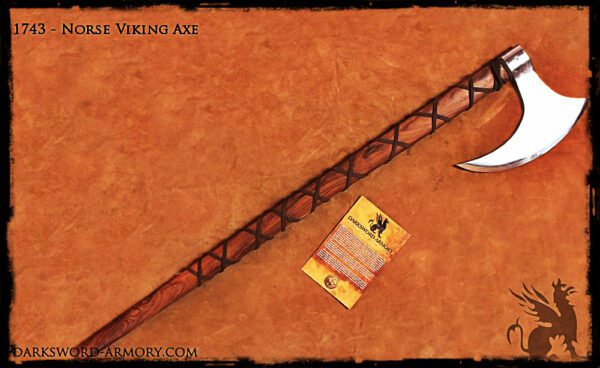
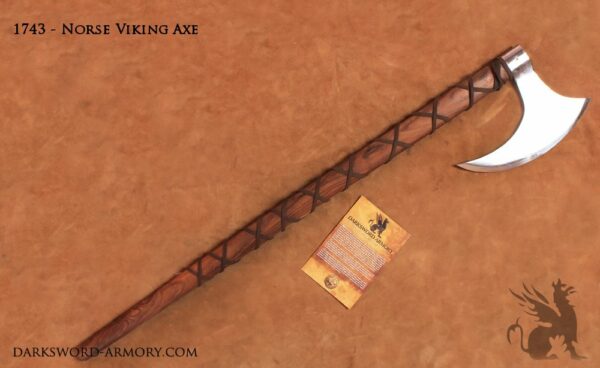
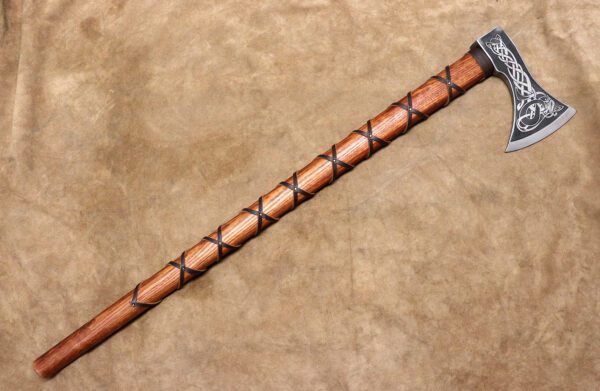
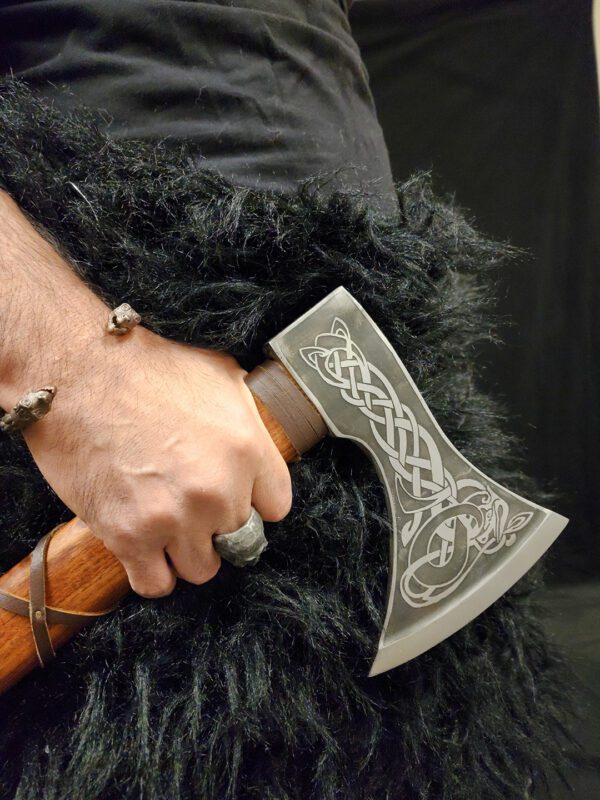
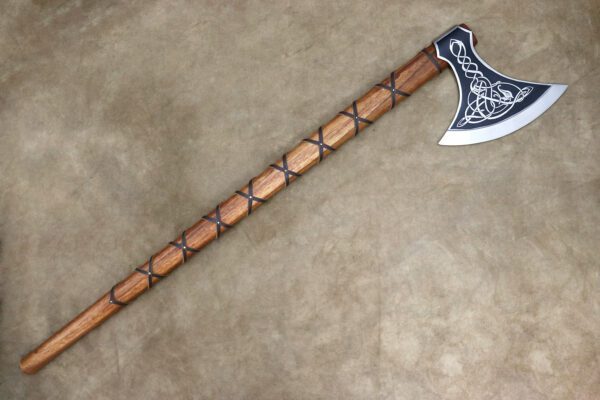
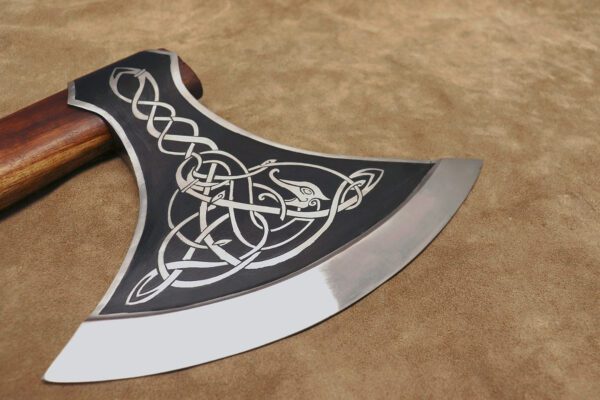
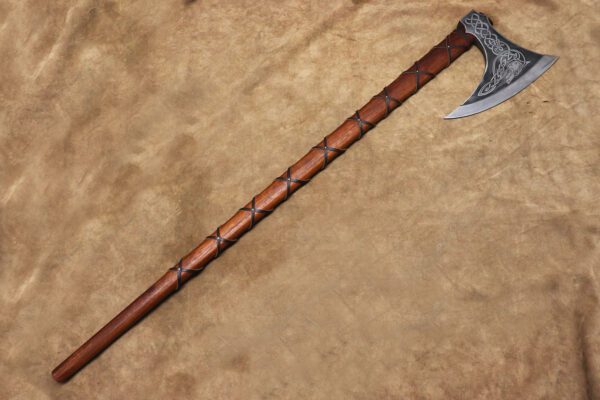
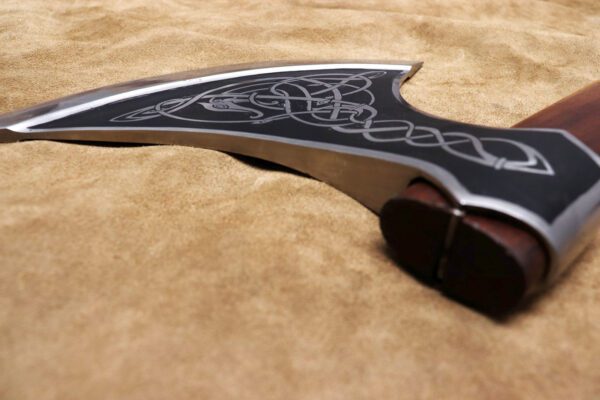
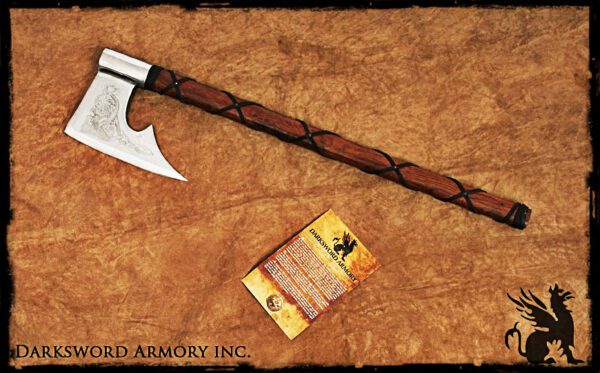
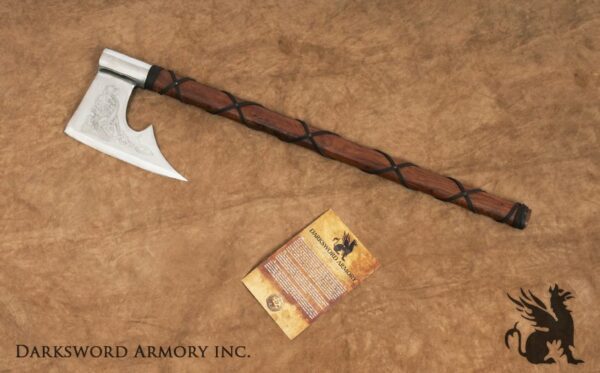
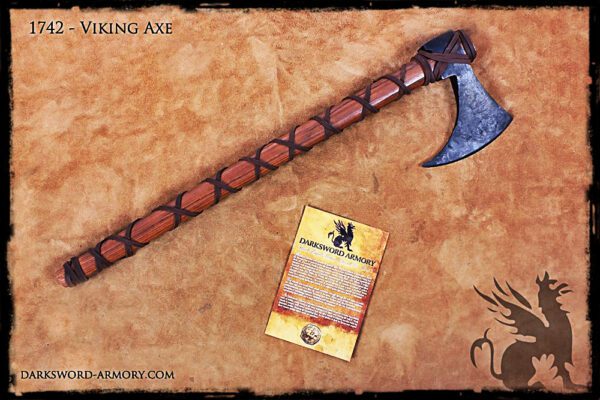
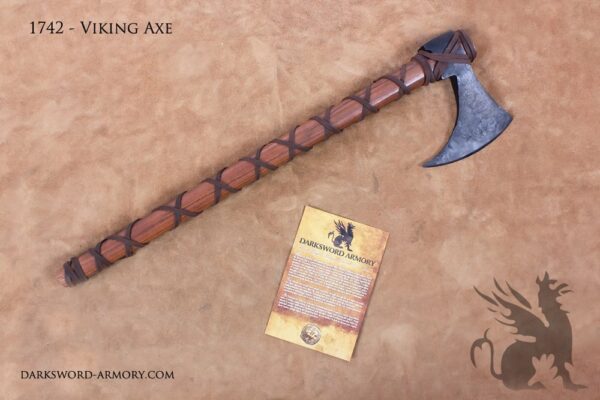
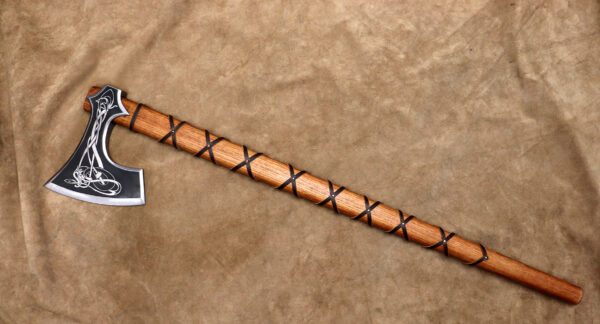
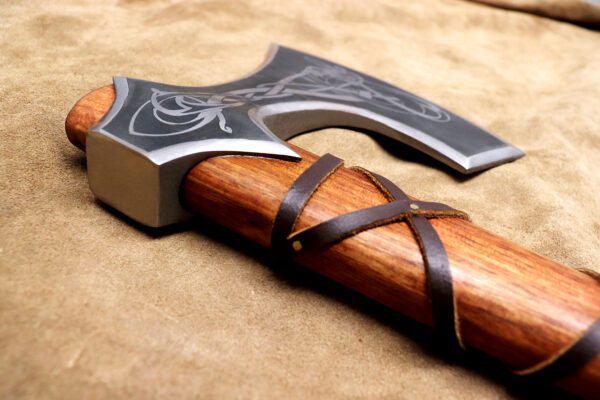
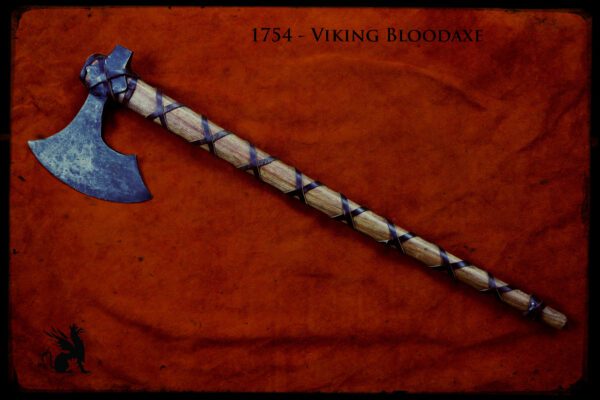
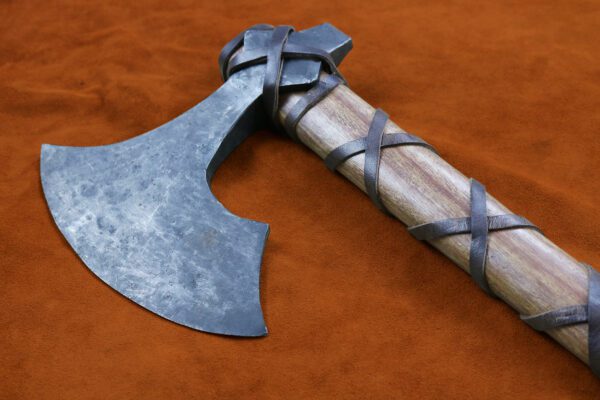
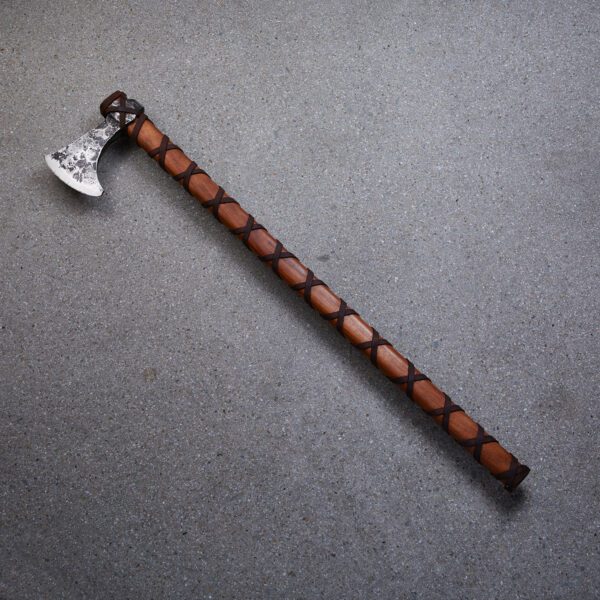
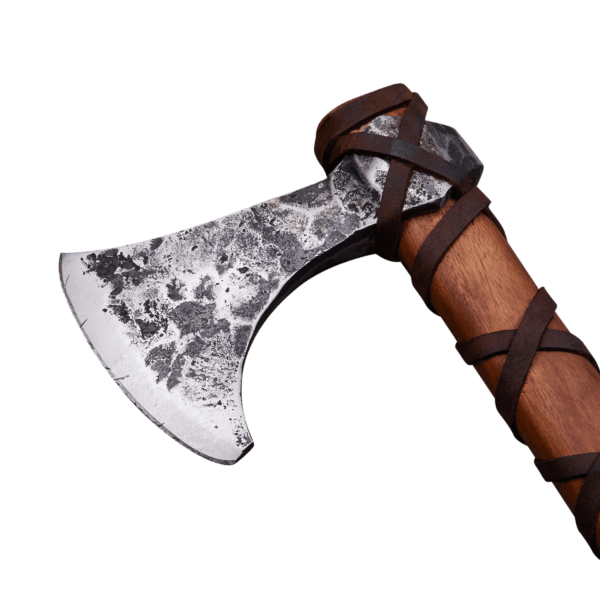
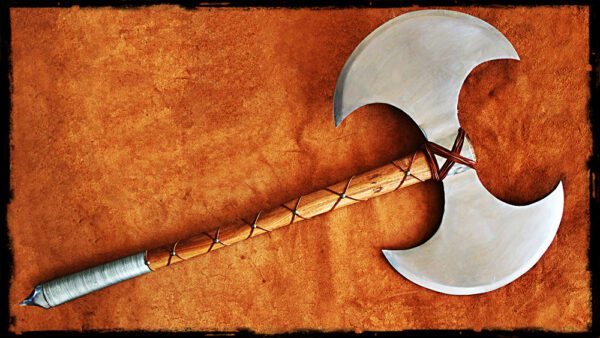
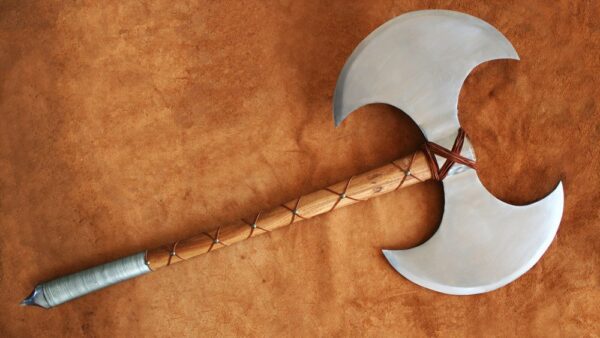
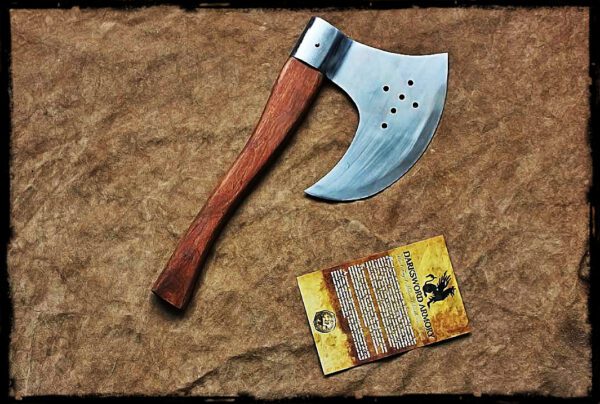
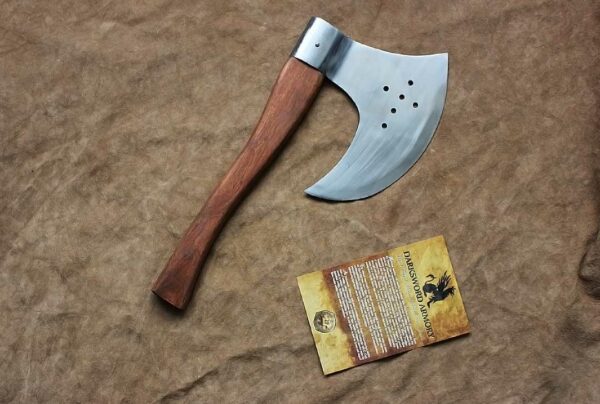
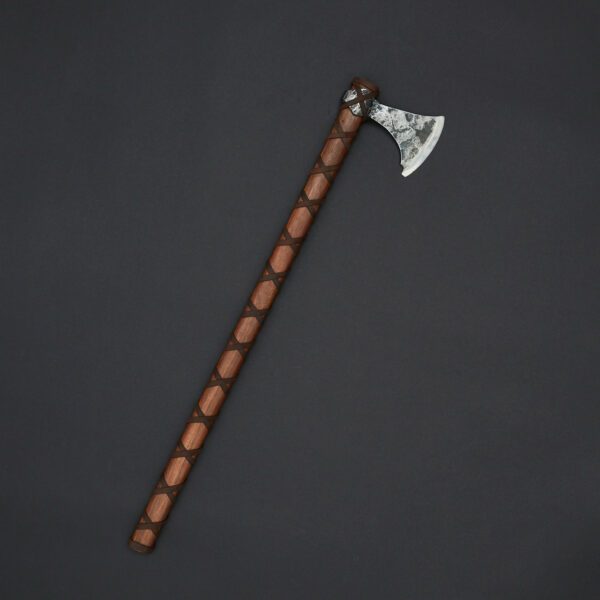
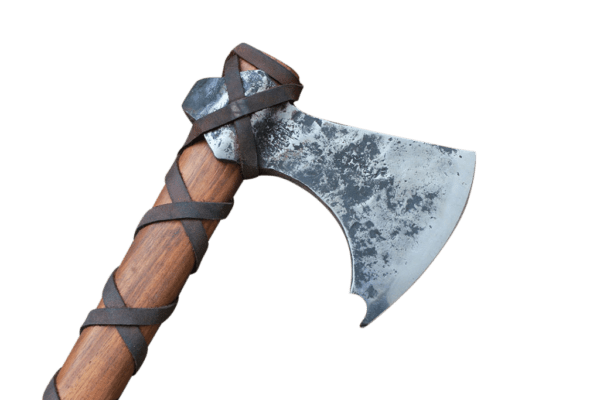
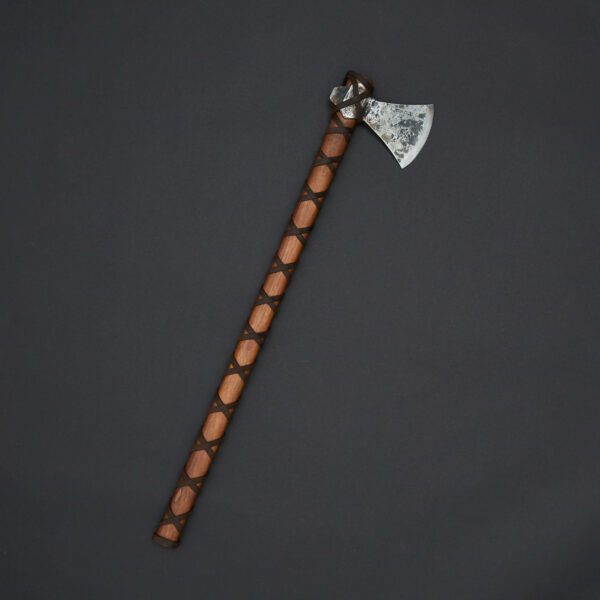
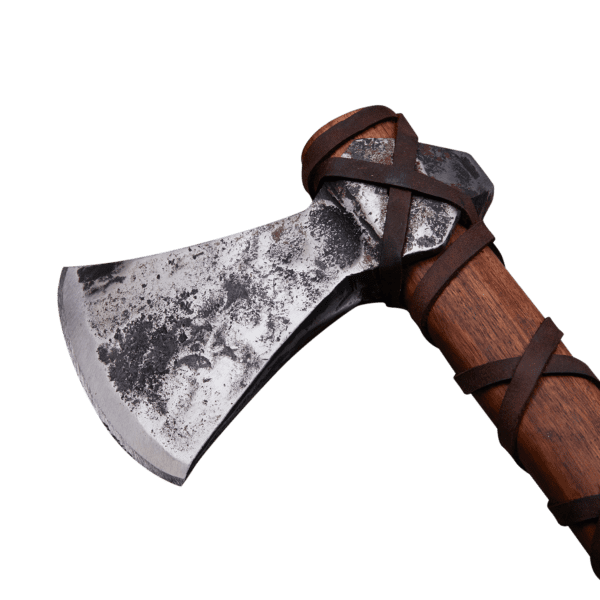
Reviews
There are no reviews yet.